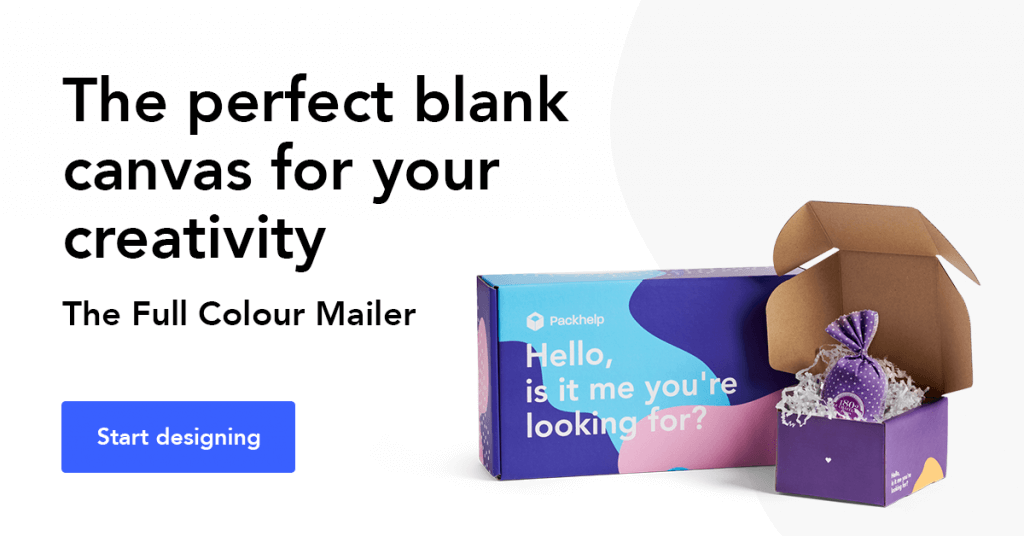Six Ugly Branding Mistakes Designers & Small Business Must Avoid


Subscribe now! Receive 15% discount.
Don’t miss out – get 15% off your first order when you join the newsletter. It’s fast, free, and kinda smart.
You're now subscribed!
In this article:
Your brand serves as the face of your company.
A product that has succeeded in the market is typically the one that has a good brand image in the first place.
People love your brand. That’s why they buy it.
In other words, maintaining your brand image is critical. Mistakes in branding might have disastrous effects on your business.
What are those branding mistakes? Let’s look at those in this article.
1. Targeting the wrong audience
One of the biggest branding mistakes any company can make is targeting the wrong audience.
To increase your chances of selling your products, you need to appeal to an audience that is likely to use them.
You can’t market your minimalist organic clothing line to middle-aged men with a passion for motorbikes. The likelihood of them being interested is minimal.
Believe it or not, this branding mistake is not a rare occurrence as you might think.
When Colgate already had an established oral hygiene market, it began selling frozen beef lasagna to the same market.
The result?
Well, Colgate failed to sell the lasagna of course.
The audience couldn’t seem to find the connection between the lasagna and toothpaste. According to Dr. Samuel West, creator of the Museum of Failure in Sweden, this happened in the 1980s.

Source: Museum Of Failure
So, you need to identify those people who are likely to purchase your products and tailor your branding to them.
To do this, you need to create a buyer persona. A buyer persona is a fictional representation of your ideal customer based on market research.
If you want a good idea of your ideal customer, you can look at your competitors’ audience. You may also use focus groups to gather crucial insights that will help you narrow down your optimal market.
Once you’ve identified who is most likely to buy your product, all your branding material should take them into account.
You must speak your audience’s language and craft a brand personality that resonates with them.
For instance, your branding can include skater slang and urban themes if you’re selling skateboards.

On the other hand, you can use technical language to sell software to businesses.
The imagery should be something your audience is familiar with, too. Your business cards, website, packaging supplies, billboards, and other marketing collateral should contain these familiar elements.
If you insist on using poetry to appeal to numbers-focused B2B businesses or marketing jargon to graphic artists, then you’re missing the mark entirely.
By trying too hard to impress the wrong audience, you do not impress anyone at all.
2. Not having a consistent brand identity
An inconsistent brand identity is like sitting across someone who switches their personality back and forth from Arnold Schwarzenegger to Bill Murray to Kermit the Frog. It’s confusing at best and disturbing at worst.
Your potential customers will not choose your brand if they’re confused about what it represents.
A brand that’s unsure about its identity does not inspire confidence in the customer. A consistent brand identity is crucial to building an audience as it gives people something to associate your brand with.
That, in turn, leads to higher conversion rates.
Your team should set specific brand guidelines based on the audience you’ve decided to cater to.
These guidelines will allow your marketing team to keep the company aligned with a consistent brand identity.

Source: The Branding Journal
To illustrate how important it is to have a consistent brand identity, let’s look at the Tropicana branding case.
When the brand adopted a minimalist packaging strategy in 2009, it lost 20% in sales in just two months.
Tropicana strayed so far from its established brand identity that some existing customers felt alienated by the new design.
Though Tropicana had kept their brand colours and natural orange juice messaging, they had replaced some critical items on their packaging in one go.
- Their central packaging design, the straw through an orange, was replaced with a glass of orange juice.
- They made “100% Orange, Pure and Natural” the centre and initial focus of the packaging, instead of the iconic straw through orange they’re known for.
- The font changed from the iconic bold gradient font to a slimmer modern font with a solid colour.
- They placed this new logo on the side instead of the centre
The result was that the same Tropicana product looked like a completely different product altogether.
The iconic Tropicana package wasn’t immediately recognizable on store shelves.
Tropicana ended up spending $50 million to return to its original packaging to win back lost customers.
Moral of the story? Stick to your brand identity as much as possible.
In turn, you’ll have better sales, along with a nurtured user base.
3. Ignoring customer experience
You should ensure your customers have a good experience with your brand (that means understanding your customer persona).
Their experience, after all, will affect how they perceive you as a brand.
A positive customer experience will mean they’ll trust your brand more and perhaps buy from you down the road.
The same principle applies to the contrary.
If you fail to deliver a good customer experience, those customers will associate your brand with poor quality and, well, won’t buy from you.
Several factors may contribute to a negative customer experience.
Some are sloppy product packaging, unoptimized website UI, poor website load times, unnecessary long sign-up processes, slow response to email queries, and unhelpful customer support.

Have these fixed.
Do the following to ensure a good customer experience:
- Optimize your website’s UI and load time. Speeding up your website will mean fewer frustrated customers and a more positive overall experience.
- Rethink your packaging design. Follow packaging trends in the industry and work with a packaging engineer.
- Orient your customer support on FAQs. Streamlining the process at which customers can immediately get answers will provide a positive experience, even if they don’t make a purchase.
- Track your emails. Tracking your emails can help you ensure personal conversations with users.
Always think about how you can make it easy for your customer.
That’s what good customer experience is all about. Ensure a good customer experience to ensure a good brand image.
4. Not creating relevant brand visuals
The colours and visuals you use in campaigns should also be relevant. Colour theory is a massive part of your branding
So, don’t include the image of a dog in your marketing collateral if you’re selling ceramic plates, for instance.
That just wouldn’t make sense. If you want to incorporate additional imagery into your marketing material, make sure the imagery is appropriate.

Source: Coca Cola
Let’s take Coca-Cola as an example. The brand incorporates imagery like Santa Claus into its marketing collateral during the Christmas season (see image above).
It’s just one way to stand out.
The Santa Claus image is relevant because Santa Claus equals Christmas. People get the connection.
There are, however, other rules to follow when including additional imagery that’s relevant in your marketing collateral.

Your brand consistency should remain. In other words, the visual elements your audience already associates with your brand should not be removed.
Let’s take a look at the Coca-Cola example again.
Notice that the iconic red color and the logo are there. The familiar shapes are there. So, just one look at the truck, and people still know which brand the truck came from.
Stick to your company’s brand guidelines at all times, and you’ll be fine.
5. Not training your team
If you’re your company’s founder, you most likely already have some brand guidelines in mind.
However, it’s not enough that you know how to apply these to your collateral, as you would also be working with a team of graphic artists, copywriters, video editors, and much more.
You need to make sure they know those guidelines, too.
So, schedule meetings to go over the brand guidelines. Here are some helpful tips to ensure all of you are on the same page:
- Create a brand persona. This imaginary person will serve as the human representation of your brand, allowing your team to better grasp whom you are catering to and the brand’s personality.
- Provide your team with the exact hex code for your brand colours. Because computer monitors are calibrated differently, hex codes ensure that no matter who’s working on what computer, the colour will always come out as it should.
- Supply your team with sample material that best represents your brand. It could be your website, your types of packaging, your company’s slogans, other written content, and more.
Training your team to follow your company’s brand guidelines will help reduce mistakes and make your marketing department more confident with its output.

It will also reduce the time your marketing department takes to produce content. Visual inconsistency is no longer an issue since everyone already knows the rules.
6. Using out-of-date marketing materials
Don’t use out-of-date marketing materials. That would be a waste of money. It will also hurt your company’s image.
If interested customers receive irrelevant data they cannot act on, they’d naturally be annoyed.
But what exactly is out-of-date marketing collateral? Look for the following signs:
- If there are unactionable details on an existing marketing collateral (i.e., old phone number, old website link, old office address)
- If an existing marketing material has out-of-date elements or logos
- If a sale or promo being advertised has expired
- If an ad that has proven to be inefficient is still running (i.e., high cost per result, negative feedback, does not meet KPIs)
Quickly take this marketing material down and replace it with an updated one. Remove outdated company details and expired sales and promos.
To ensure such incidents of using outdated marketing material don’t happen again, keep everyone in the loop whenever there’s a fundamental change in a marketing campaign.
In Closing
As the face of your company, you should treat your brand with care. That means there are branding mistakes you should avoid making.
You learned six of those.
Targeting the wrong audience is a branding mistake. A changing brand image does not help your brand at all either. Incorporating irrelevant imagery is a branding mistake. So are not investing in customer experience and not training your team to stick to brand guidelines. You should avoid not constantly updating your marketing collateral as well.
Steer clear of these branding mistakes when launching your marketing campaigns, and your brand image will be in tip-top shape.
Take care of your brand, and your brand will take care of you.











